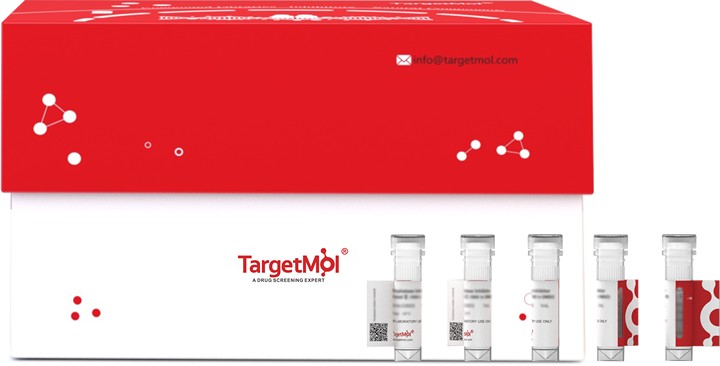购物车
- 全部删除
 您的购物车当前为空
您的购物车当前为空

Toxin A Protein, Clostridioides difficile, Recombinant (His) is expressed in E. coli.

| 规格 | 价格 | 库存 | 数量 |
|---|---|---|---|
| 20 μg | ¥ 2,290 | 20日内发货 | |
| 100 μg | ¥ 4,320 | 20日内发货 | |
| 1 mg | ¥ 14,600 | 20日内发货 |
| 生物活性 | Activity has not been tested. It is theoretically active, but we cannot guarantee it. If you require protein activity, we recommend choosing the eukaryotic expression version first. |
| 产品描述 | Toxin A Protein, Clostridioides difficile, Recombinant (His) is expressed in E. coli. |
| 种属 | Clostridioides difficile |
| 表达系统 | E. coli |
| 标签 | N-6xHis |
| 蛋白编号 | P16154 |
| 别名 | Toxin A,tcdA |
| 氨基酸序列 | ASTGYTSINGKHFYFNTDGIMQIGVFKGPNGFEYFAPANTDANNIEGQAILYQNKFLTLNGKKYYFGSDSKAVTGLRTIDGKKYYFNTNTAVAVTGWQTINGKKYYFNTNTSIASTGYTIISGKHFYFNTDGIMQIGVFKGPDGFEYFAPANTDANNIEGQAIRYQNRFLYLHDNIYYFGNNSKAATGWVTIDGNRYYFEPNTAMGANGYKTIDNKNFYFRNGLPQIGVFKGSNGFEYFAPANTDANNIEGQAIRYQNRFLHLLGKIYYFGNNSKAVTGWQTINGKVYYFMPDTAMAAAGGLFEIDGVIYFFGVDGVKAPGIYG |
| 蛋白构建 | 2387-2710 aa |
| 蛋白纯度 | > 85% as determined by SDS-PAGE. |
| 分子量 | 40.1 kDa (predicted) |
| 缓冲液 | Tris-based buffer, 50% glycerol |
| 复溶方法 | A Certificate of Analysis (CoA) containing reconstitution instructions is included with the products. Please refer to the CoA for detailed information. |
| 存储 | Lyophilized powders can be stably stored for over 12 months, while liquid products can be stored for 6-12 months at -80°C. For reconstituted protein solutions, the solution can be stored at -20°C to -80°C for at least 3 months. Please avoid multiple freeze-thaw cycles and store products in aliquots. |
| 运输方式 | In general, Lyophilized powders are shipping with blue ice. Solutions are shipping with dry ice. |
| 研究背景 | Precursor of a cytotoxin that targets and disrupts the colonic epithelium, inducing the host inflammatory and innate immune responses and resulting in diarrhea and pseudomembranous colitis. TcdA and TcdB constitute the main toxins that mediate the pathology of C.difficile infection, an opportunistic pathogen that colonizes the colon when the normal gut microbiome is disrupted. Compared to TcdB, TcdA is less virulent and less important for inducing the host inflammatory and innate immune responses. This form constitutes the precursor of the toxin: it enters into host cells and mediates autoprocessing to release the active toxin (Glucosyltransferase TcdA) into the host cytosol. Targets colonic epithelia by binding to some receptor, and enters host cells via clathrin-mediated endocytosis. Binding to LDLR, as well as carbohydrates and sulfated glycosaminoglycans on host cells suface contribute to entry into cells. In contrast to TcdB, Frizzled receptors FZD1, FZD2 and FZD7 do not act as host receptors in the colonic epithelium for TcdA. Once entered into host cells, acidification in the endosome promotes the membrane insertion of the translocation region and formation of a pore, leading to translocation of the GT44 and peptidase C80 domains across the endosomal membrane. This activates the peptidase C80 domain and autocatalytic processing, releasing the N-terminal part (Glucosyltransferase TcdA), which constitutes the active part of the toxin, in the cytosol.; Active form of the toxin, which is released into the host cytosol following autoprocessing and inactivates small GTPases. Acts by mediating monoglucosylation of small GTPases of the Rho family (Rac1, RhoA, RhoB, RhoC, Rap2A and Cdc42) in host cells at the conserved threonine residue located in the switch I region ('Thr-37/35'), using UDP-alpha-D-glucose as the sugar donor. Monoglucosylation of host small GTPases completely prevents the recognition of the downstream effector, blocking the GTPases in their inactive form, leading to actin cytoskeleton disruption and cell death, resulting in the loss of colonic epithelial barrier function. Also able to catalyze monoglucosylation of some members of the Ras family (H-Ras/HRAS, K-Ras/KRAS and N-Ras/NRAS), but with much less efficiency than with Rho proteins, suggesting that it does not act on Ras proteins in vivo. |